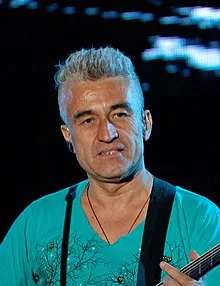
Age, Biography and Wiki
Jorge González (musician) (Jorge Humberto González Ríos) was born on 6 December, 1964 in Santiago, Chile, is an artist. Discover Jorge González (musician)’s Biography, Age, Height, Physical Stats, Dating/Affairs, Family and career updates. Learn How rich is He in this year and how He spends money? Also learn how He earned most of networth at the age of 59 years old?
| Popular As | Jorge Humberto González Ríos |
| Occupation | N/A |
| Age | 59 years old |
| Zodiac Sign | Sagittarius |
| Born | 6 December, 1964 |
| Birthday | 6 December |
| Birthplace | Santiago, Chile |
| Nationality | Chile |
We recommend you to check the complete list of Famous People born on 6 December.
He is a member of famous artist with the age 59 years old group.
Jorge González (musician) Height, Weight & Measurements
At 59 years old, Jorge González (musician) height not available right now. We will update Jorge González (musician)’s Height, weight, Body Measurements, Eye Color, Hair Color, Shoe & Dress size soon as possible.
| Physical Status | |
|---|---|
| Height | Not Available |
| Weight | Not Available |
| Body Measurements | Not Available |
| Eye Color | Not Available |
| Hair Color | Not Available |
Dating & Relationship status
He is currently single. He is not dating anyone. We don’t have much information about He’s past relationship and any previous engaged. According to our Database, He has no children.
| Family | |
|---|---|
| Parents | Not Available |
| Wife | Not Available |
| Sibling | Not Available |
| Children | Not Available |
Jorge González (musician) Net Worth
His net worth has been growing significantly in 2022-2023. So, how much is Jorge González (musician) worth at the age of 59 years old? Jorge González (musician)’s income source is mostly from being a successful artist. He is from Chile. We have estimated
Jorge González (musician)’s net worth
, money, salary, income, and assets.
| Net Worth in 2023 | $1 Million – $5 Million |
| Salary in 2023 | Under Review |
| Net Worth in 2022 | Pending |
| Salary in 2022 | Under Review |
| House | Not Available |
| Cars | Not Available |
| Source of Income | artist |
Jorge González (musician) Social Network
| Wikipedia | |
| Imdb |
